Traditional drywall is commonly utilized in the main sections of a house, yet there are uniquely designed color-coded alternatives for specific requirements. Within these options, green and purple drywalls stand out as the preferred selections.
Purple drywall is moisture, mildew, and mold resistant. It also doesn’t scratch or dent and is more expensive. Green drywall is only moisture resistant. It is suitable for installation in or near bathrooms.
When installed in the right place, each type of drywall will serve you properly. Make sure to consult an expert in drywall to help you choose the best type to use in your home.
| Purple | Green | |
|---|---|---|
| Moisture Resistant | Yes | Yes |
| Mold Resistant | Yes | No |
| Mildew Resistant | Yes | No |
| Fire Resistant | Yes | Yes |
| Sound Proof | Yes | Yes |
| Uses | Areas with a lot of water | Areas with steam or humidity is fine |
| Features | Doesn’t scratch or dent | Easily scratches and dents |
| Cost | More expensive | Affordable |
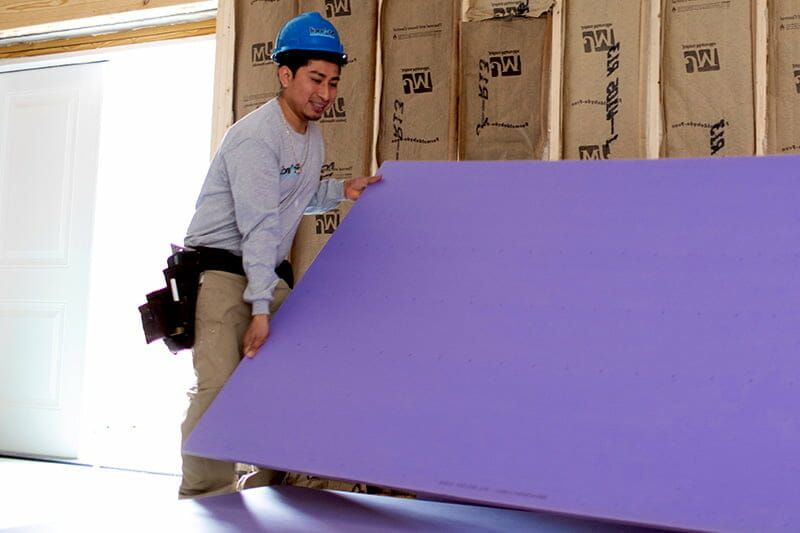
Which Is Better Green Or Purple Drywall
Purple drywall is considered superior to green drywall. Green drywall is suitable for places in your house with a lot of moisture. It is best suited for bathroom ceilings.
On the other hand, purple drywall can be installed in different parts of the house. In addition to being moisture resistant, it also resists mold and mildew. Thus it can be installed in locations with mold and mildew problems in the house.
Additionally, since purple drywall is resistant to scratches or dents, it is suitable for high-traffic areas in the house. It is also superior in its soundproofing capabilities to green drywall. It also doesn’t dent or scuff.
What Is The Difference Between Purple And Green Drywall
Both green and purple drywall are common types of drywall you can use in your home and have high resistance against fire. Besides their color, they have some significant differences.
Green drywall is highly moisture resistant. Purple drywall is not only moisture resistant, it is also resistant to mold and mildew.
Purple drywall is thicker and harder. Thus, it is hard to work with as it is hard to cut. However, this makes it better at soundproofing areas in your home it is installed than the green drywall. It is also resistant to scratches and doesn’t dent when hit.
Types Of Drywall
- White drywall. Is the most common type of drywall and is known as regular drywall. It is white on one side and brown on the other. It is affordable and available in different sizes for different types of construction.
It is not resistant to both moisture and mold.
- Green drywall. Is also known as moisture-resistant drywall. It is not waterproof and should not be installed in areas with lots of water. It is suitable for bathroom ceilings, the kitchen, and the laundry area due to its moisture-resistant capacity. It has a green cover that helps to repel moisture. It is also available in a range of sizes for different prices.
It is not mold-resistant either.
- Purple drywall is suitable for walling and ceilings in any part of the house. It is mold, mildew, and moisture resistant. It can be installed in areas of the house with moisture and mildew problems. It is also suitable as a wall in high-traffic areas since it is heavier and doesn’t scratch or scruff.
It has a fiberglass cover that makes it uncomfortable to touch.
- Blue drywall. Has superior waterproof capabilities and can be installed in the bathroom without a problem. It also has superior mold and mildew resistance to other types of drywall. It is eco-friendly and has superior soundproofing capabilities.
It is not suitable for use in dry areas.
- Type X drywall is also known as fire-resistant drywall. As the name suggests it has a high resistance to fire. It is made with non-combustible fibers and is suitable for use in apartments and garages to help meet building code regulations. It is also very thick, making it superior soundproofing drywall.
5 Steps To Hang Drywall
Drywall is best hung by professional installers. You can also DIY drywall projects if you have the tools, skills, and time to work on the project. If you are going to hand drywall by yourself, or hire a professional, here is how to professionally go about it.
Step 1 - Tools
You need to assemble all the right materials and tools before you start working. You need your drywall, electric drill, tape measure, knife, keyhole saw, pencil, chalk line, chalk, and any other materials needed for drywall installation. Measure and mark the points at which you will hang the vertical studs.
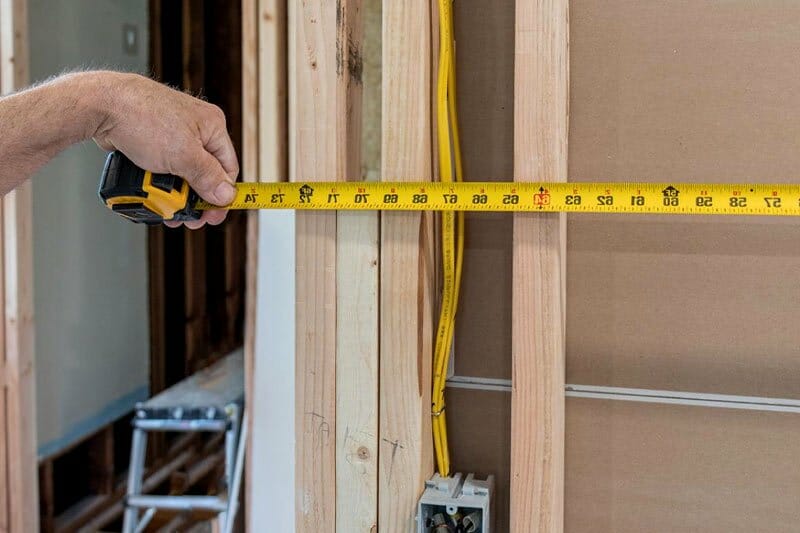
If you don’t have all these tools or don’t know what they are for call a pro.
Step 2 - Measure
Measure and cut all the drywall pieces that you will use for your project. Mark the points in your roof where you will install the remaining pieces. Measure the drywall pieces and cut them if need be so that they will fit into the space.
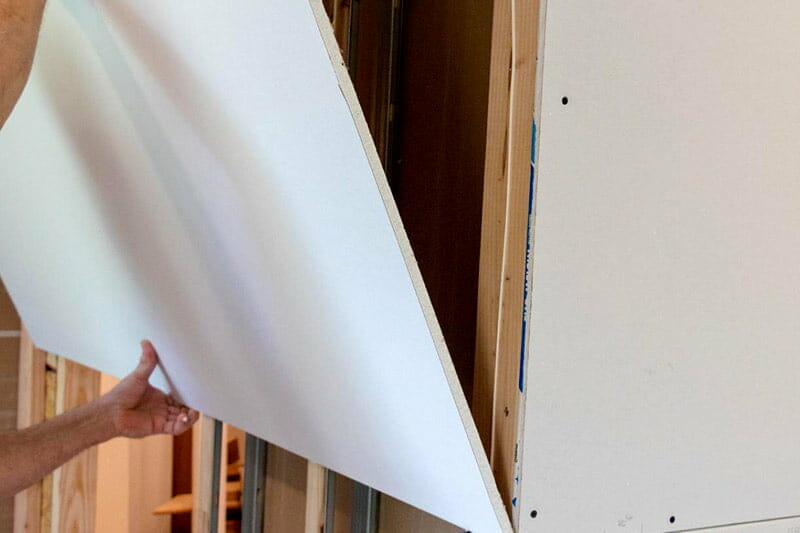
Step 3 - Cut
Hang the initial piece of drywall. When you install the drywall, make sure both ends are installed on vertical studs.
Hanging drywall is a 2-person task. If you are working on your own, you can hand the drywall vertically. Make sure to hang the first piece at the topmost point and at a corner. Once the drywall piece is in place, you can screw it into the studs slightly to hold it in place.
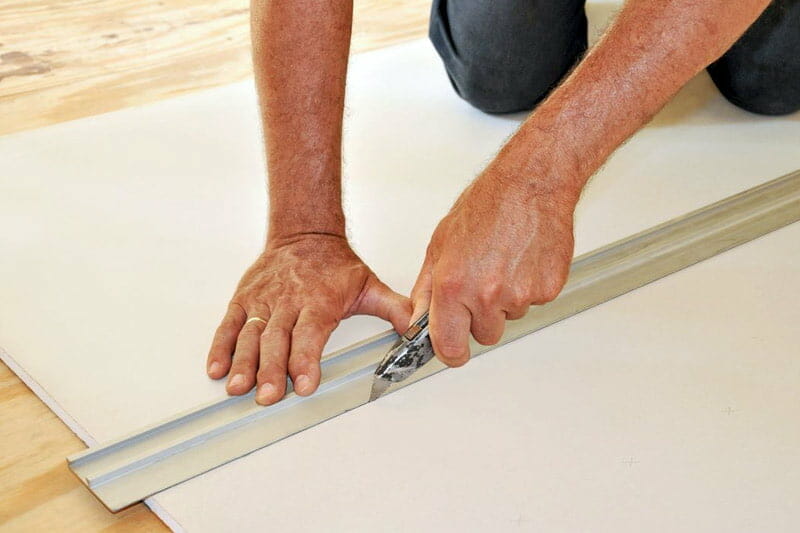
Step 4 - hang
Now, hang all the drywall in its place. Make sure to cut openings that correspond to the cables and switches in the house.

Step 5 - Roof
When the drywall is fixed all over the house, you can now fasten the drywall onto the roof. Use drywall screws to keep it in place. Make sure to buy your drywall from authorized sellers to get high-quality products.
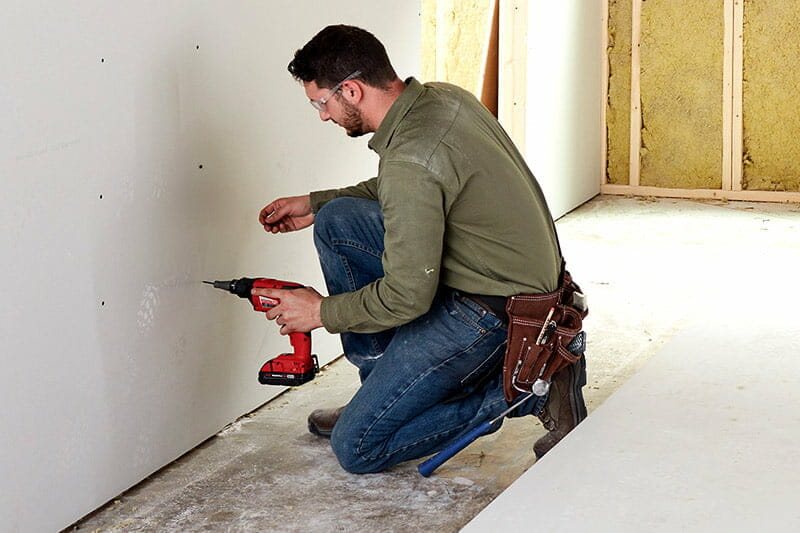
Use This Free Tool
Homegardenguides.com is a free tool to connect homeowners to professional drywall installers in two easy steps.
Step 1, enter your zip code at the top of the page.
Step 2, provide more information about your project in the subsequent form.
The form is then sent to professional installers near you. You will get back three quotes and advice from installers that you can hire for a properly done job of hanging drywall.







